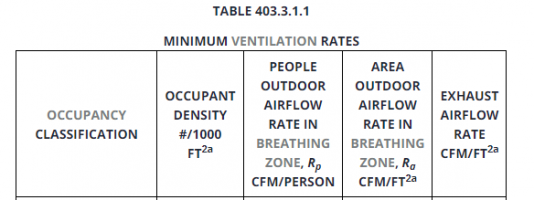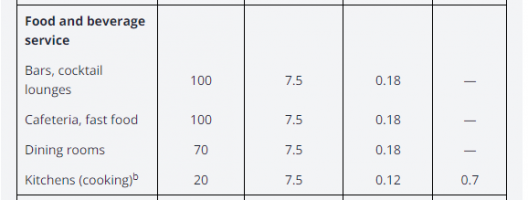north star
Sawhorse
- Joined
- Oct 19, 2009
- Messages
- 4,596
> > > 6
I have a facility that is in the process of [ trying ] to open a small Cafeteria
inside a building, by a new contractor.
There has been some verbal input \ comments made in the past & a few
currently, as to the cooking smells being ventilated throughout the entire
building.........The Cafeteria area in question does not have its own HVAC
system, rather it is connected to the whole building system [ i.e. -
the supply air & the return air ].
Q1): Is there anything in the Mech. Codes, Fire Codes or other that
addresses containment of; in this case, "cooking odors" [ i.e. - the odors
originating from a particular room \ area \ space should: (a) be contained
in that space, or (b) be directed to the exterior of the building ?
NOTE: In the `21 IMC, Sect. 501.3, Exception # 3 seems to not require
"exhausting to the exterior by commercial cooking recirculating systems",
while Section 502.1.3 seems to require that "odors" be exhausted to the
exterior".
Anyone care to try and explain ?
Thank you !
< < < 3
I have a facility that is in the process of [ trying ] to open a small Cafeteria
inside a building, by a new contractor.
There has been some verbal input \ comments made in the past & a few
currently, as to the cooking smells being ventilated throughout the entire
building.........The Cafeteria area in question does not have its own HVAC
system, rather it is connected to the whole building system [ i.e. -
the supply air & the return air ].
Q1): Is there anything in the Mech. Codes, Fire Codes or other that
addresses containment of; in this case, "cooking odors" [ i.e. - the odors
originating from a particular room \ area \ space should: (a) be contained
in that space, or (b) be directed to the exterior of the building ?
NOTE: In the `21 IMC, Sect. 501.3, Exception # 3 seems to not require
"exhausting to the exterior by commercial cooking recirculating systems",
while Section 502.1.3 seems to require that "odors" be exhausted to the
exterior".
Anyone care to try and explain ?
Thank you !
< < < 3
Last edited:


